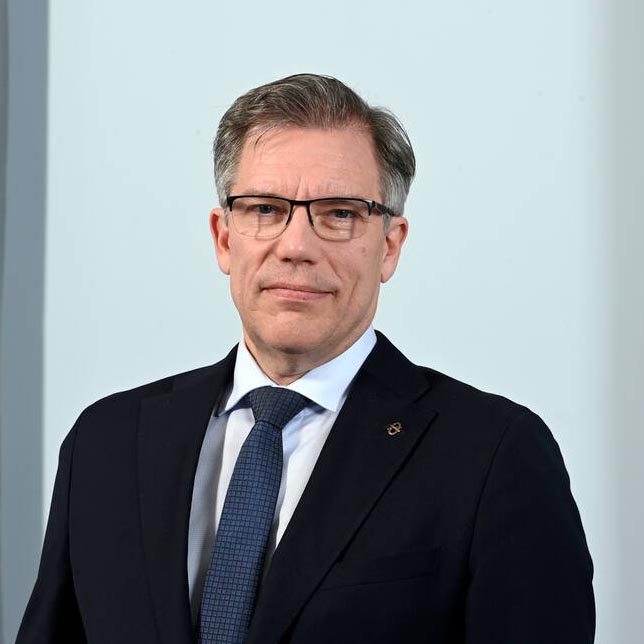Given Finland’s climate targets, the greatest challenge of this decade is to cut the transport sector’s emissions – and the final, decisive step is the switch to clean solutions in energy-intensive industries in the 2030s.
Russia invaded Ukraine in February 2022, but it had began its multipronged energy war against Europe already in the autumn of 2021. Scarcity of energy is part of Russia’s extensive influencing, which tests the strength of societies.
Finland has adapted to a completely new situation quickly. The high share of clean energy and the high level of of preparedness made the change possible. Here are four key points on the short-term and long-term outlook for Finland’s energy policy.
Rapid decoupling from Russian energy
Until now, about one third of the energy used in Finland has come from Russia. This figure is now close to zero. The sanctions imposed by the EU and the measures introduced by Finland have stopped all imports of wood fuels, pipeline gas, electricity, oil and coal. At the same time, pipelines will keep many Central European countries dependent on Russian oil and gas for years to come.
Finland’s quick exit from Russian energy was made possible by comprehensive preparedness and a consistent approach. To symbolise this, a floating LNG terminal has now arrived in the port of Inkoo and it has been connected to the Finnish natural gas network to secure our gas supply. This is not in conflict with green transition: Over the past 12 months, Finland has cut its natural gas use by more than 50 per cent, which is a record amount. Our dependency on oil products is also exceptionally low.
Renewable energy already accounts for almost half of all energy used in Finland. Some 90 per cent of our electricity is fossil free. An exceptional amount of emission-free power plant capacity was introduced in 2022: more than 2,400 megawatts of wind power and 1,600 megawatts of nuclear power was built in Finland last year.
Supply is what matters
Uninterrupted access to energy is therefore vital for the functioning of society. With its energy networks and ports, Finland has been able to switch to new suppliers. In 2022, we addressed two challenges: new ways to purchase fuels, and strengthening of infrastructure. Finland has an agile and efficient security of supply organisation – undoubtedly one of the best in the world.
From September to December 2022, the consumption of electricity was 7-10 % less than in the previous year.
However, the energy war has increased the risk of power shortages. In a challenging situation, citizens have substantially reduced their energy consumption and we have managed to keep our electricity supply on a stable basis. From September to December 2022, the consumption of electricity was 7-10 % less than in the previous year. The rapidly growing power plant and network capacity will help to keep the security of supply in Finland at a high level.
The market is the basis for energy supply
As the prices have risen, some commentators have proposed that the electricity market should be restrained and heavy regulation should be introduced. It is clear that the scarcity of energy is reflected in high prices but this does not mean that the market has failed. A well-functioning market is the best way to allocate the resources and the electricity generation in an efficient manner.
Heavy regulation of the electricity market would lead to frequent power shortages. Although Finland will soon achieve self-sufficiency in electricity generation at annual level for the first time since the 1960s, we will still need strong international connections. The cross-border electricity market is an opportunity for us, not a threat.
The Nordic market has also helped to keep prices at moderate levels: in 2022, electricity prices in Finland were the second lowest in Europe. This is based on clean power generation, which has been expanded for several decades: hydropower, nuclear energy and wind power.
Investments are crucial in the long term
The only way to successfully tackle the challenges arising from price developments and the security of supply is to invest in clean energy generation and flexible solutions. In Finland, a record amount of public funding is available for good projects. It is important to speed up the introduction of new innovative technologies. They may be related to energy use and solutions boosting demand response and sector integration.
We have already achieved significant progress on the path towards a decarbonised energy system.
The aim of Finland’s national climate and energy strategy is to achieve climate neutrality by the year 2035. We have already achieved significant progress on the path towards a decarbonised energy system. Making the transport sector emission free is the key challenge of this decade. The final, decisive step concerns the energy-intensive industries, which are important to Finland: our steel and chemical industries will switch to hydrogen and other clean solutions in the 2030s.
In their road maps, Finnish industrial operators have shown that they fully support this process and consider it an asset in global competition. The Finnish Government is also prepared to make substantial investments in green transition. To ensure a favourable investment environment, long-term solutions are also needed in the field of energy market regulation in the EU.

